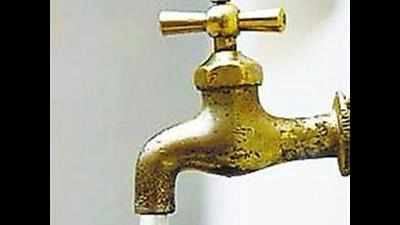- News
- City News
- mumbai News
- Maharashtra decentralises water clearances for industry, drinking water
Trending
This story is from January 20, 2017
Maharashtra decentralises water clearances for industry, drinking water

Representative image
MUMBAI: In a major shift to support ease of business, the state government has decentralised powers of water clearances for industry and drinking water. Water allocations for industry and drinking water in the state’s dams, which were cleared by the state cabinet, will now be done by irrigation corporations.
If demand for drinking water or small industries stretches beyond reservations, clearances for diverting water will be given by the water resources minister.For large industries, clearances for diverting water will be given by a cabinet sub-committee. These diversions were earlier cleared at the cabinet level.
Water reservations in over 3,600 dams in the state broadly follow this pattern: 75% water is reserved for agriculture, 10% for industry and 15% for drinking water.
“This will help speed up water clearances, especially for industry. Nearly 70-80 permissions were pending for water clearances. Each clearance would take more than a year,” said water resources secretary S M Upase.
Such scepticism is based on the experience of the last decade of water distribution in the state. The state enacted the MWRRA Act in 2005, but water allocation stayed with a high-powered cabinet committee led by then minister, Ajit Pawar. There were charges of mass diversion of water from agriculture to industry, with one matter going to court. The state government then amended the Act in 2011 to take away its powers of water allocation. The state chose to back the decisions taken by the high-powered committee and transfer the powers to the cabinet.
Purandare felt the new rules do not address the central issue of how reservations are arrived at. “The 10% reservation for industry does not take into account other sources like surface and ground water, and sewage. If it was done, reservation for industry would be lower,” he said.
If demand for drinking water or small industries stretches beyond reservations, clearances for diverting water will be given by the water resources minister.For large industries, clearances for diverting water will be given by a cabinet sub-committee. These diversions were earlier cleared at the cabinet level.
Water reservations in over 3,600 dams in the state broadly follow this pattern: 75% water is reserved for agriculture, 10% for industry and 15% for drinking water.
“This will help speed up water clearances, especially for industry. Nearly 70-80 permissions were pending for water clearances. Each clearance would take more than a year,” said water resources secretary S M Upase.
Critics said the crucial issue of water distribution needs to be regulated by an independent regulator, and not by ministers or local officials. “The power sector has a regulator and the water sector has the Maharashtra Water Resources Regulatory Authority (MWRRA). They should decide sectoral allocations and water entitlement,” said Pradeep Purandare, water expert, and former member, Marathwada Development Board.
Such scepticism is based on the experience of the last decade of water distribution in the state. The state enacted the MWRRA Act in 2005, but water allocation stayed with a high-powered cabinet committee led by then minister, Ajit Pawar. There were charges of mass diversion of water from agriculture to industry, with one matter going to court. The state government then amended the Act in 2011 to take away its powers of water allocation. The state chose to back the decisions taken by the high-powered committee and transfer the powers to the cabinet.
Purandare felt the new rules do not address the central issue of how reservations are arrived at. “The 10% reservation for industry does not take into account other sources like surface and ground water, and sewage. If it was done, reservation for industry would be lower,” he said.
End of Article
FOLLOW US ON SOCIAL MEDIA










